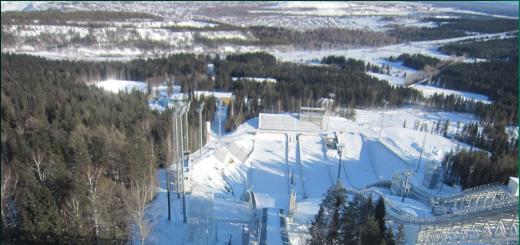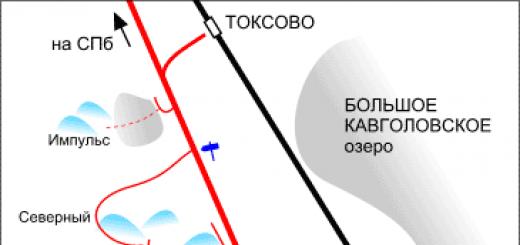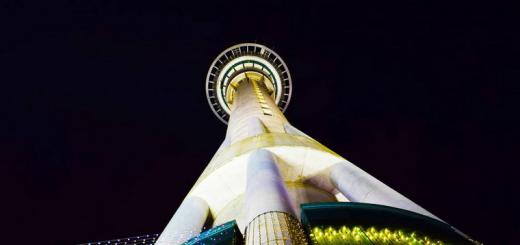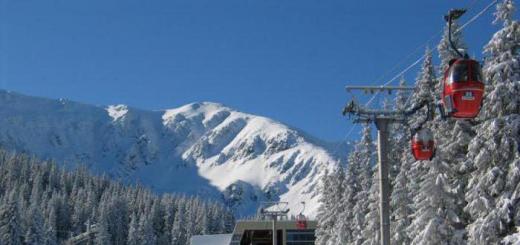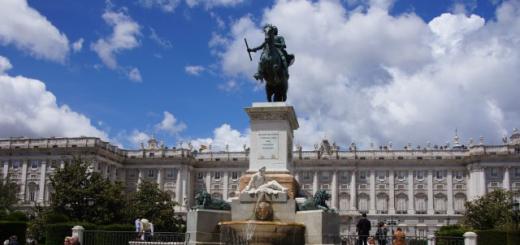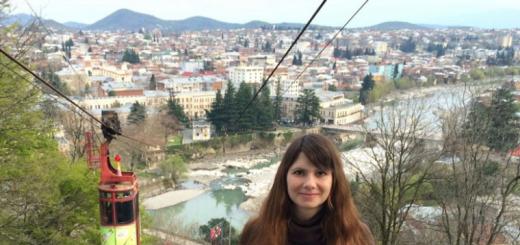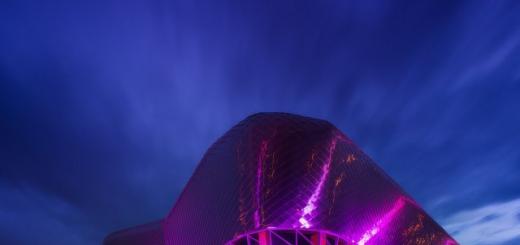First in the world a non-stop round-the-world flight took place in 1949.
A strategic bomber of the 43rd Bomber Group of the United States Air Force Boeing B-50 Superfortress with a crew of 14 took off from Caswell Air Force Base (Fort Worth, Texas) on February 26.
The plane returned to the same airfield on March 2, covering the distance of 37,742 km in 94 hours and 1 minute. The average speed was 401 km / h. In flight, the bomber's fuel reserves were replenished four times with the help of refueling aircraft.
First non-stop flight around the globe without refueling performed on December 14-23, 1986 by Dick Rutan and Gina Yeager in a Rutan Model 76 Voyager.
The aircraft with two piston engines was built by aircraft designer Burt Roothan specifically to set the record. The flight lasted 216 hours 3 minutes and 44 seconds. In total, the aircraft covered 42,432 km with an average speed of 186.11 km / h.
On March 1-3, 2005, entrepreneur and pilot Steve Fossett installed a world speed record non-stop manned round-the-world flight without refueling.
The single-seat turbojet aircraft, created by Burt Rutan's Scaled Composites, circled the Earth in 67 hours 1 minute and 46 seconds. The average flight speed was 590.7 km / h, the aircraft covered a distance of 36,912 km.
Flight duration records
The first in a series high-profile Soviet records the duration of air travel was an achievement of the crew of Valery Chkalov, Georgy Baidukov and Alexander Belyakov.
On July 20-22, 1936, they flew from Moscow to the Far Eastern island of Udd (now Chkalova Island) on an experimental ANT-25 aircraft (chief designers Andrey Tupolev and Pavel Sukhoi). Khabarovsk region). The aircraft covered 9,374 km in 56 hours and 20 minutes.
On July 12-14, 1937, the crew of Mikhail Gromov, Andrey Yumashev and Sergey Danilin on the ANT-25 improved the achievements of their colleagues by completing a non-stop flight over a distance of 11,500 km in 62 hours and 17 minutes on the route Moscow - San Jacinto (California, USA).
Their record was broken in November 1938: two Vickers Wellesley British Air Force bombers flew 11,539 km between Egypt and New Australia without landing.
Record duration of piloting aircraft with refueling was installed in 1959 in the United States.
Robert Timm and John Cook took off from McCarran Airport (Las Vegas, Nevada) in a specially prepared light-engine Cessna 172 on December 4, 1958. The aircraft circled nonstop over the airfield for 64 days 22 hours 19 minutes 5 seconds and on February 5, 1959, it made a soft landing. Refueling of the aircraft in the air was carried out twice a day with the help of a fuel tanker moving along the territory of the airfield.
Record of the longest piloting an aircraft without refueling installed in 2015 during André Borschberg's round-the-world flight on the Solar Impulse 2 electric aircraft.
In the period from June 28 to July 3, on the Nagoya (Japan) - Hawaii (USA) section, Borshberg covered a distance of 7,212 km in 117 hours and 52 minutes. At the same time, he set a record for distance non-stop flight for electric planes. The round-the-world flight itself was interrupted due to malfunctions of the aircraft batteries.
Longest Flight Record unmanned aerial vehicle(UAV) installed by the QinetiQ Zephyr 7 apparatus at the Yuma Proving Grounds of the US Army (Arizona). The UAV stayed in the air for two weeks - 336 hours 22 minutes and 8 seconds.
Longest nonstop scheduled flights
As of June 2017, the longest-running nonstop in the world is operated by Qatar Airways on the Auckland ( New Zealand) - Doha (Qatar).
"TASS / Ruptly"
The first flight was performed on February 6, 2017. The flight uses a long-haul wide-body passenger aircraft Boeing 777-200LR. It covers the distance of 14,524 km between Auckland and Doha in 17 hours and 30 minutes.
The longest non-stop flight among Russian carriers is operated by Aeroflot. This is flight SU106 en route Moscow - Los Angeles (USA) with a length of 9781 km. Long-haul wide-body aircraft Airbus A330-200 cover it in 12 hours and 50 minutes.
Air carrier Singapore Airlines plans to receive an ultra-long-range wide-body passenger aircraft Airbus A350-900ULR in 2018. It is expected that these machines will be used for non-stop flights from Singapore to New York (USA) over a record 15,348 km.
The material was prepared according to the data of "TASS-Dossier".
100 great records of aviation and astronautics Zigunenko Stanislav Nikolaevich
Flying around the world
Flying around the world
The idea of ultra-long non-stop flights, as mentioned above, originated in the 30s of the XX century. Our famous pilot VP Chkalov even dreamed of "swinging around the ball" - that is, flying around the globe without landing.
It turns out that these were not just dreams. Pilots M. M. Gromov and G. F. Baidukov, designers A. N. Tupolev, A. D. Charomsky, A. S. Moskalev and others became participants in one of the most daring projects for that time. Not many people now know that in 1936-1941, with their active participation, an ultra-long-range flight of the ANT-25 aircraft along the 56th parallel (latitude of Moscow) with a length of 22,500 km was prepared.
The ANT-25 was to be equipped with a 2000-horsepower AN-1 diesel engine, developed at the Central Institute of Aviation Motors. In terms of efficiency, it had no equal: the specific fuel consumption was half that of the then, and even for the current gasoline carburetor engines - 0.140-0.145 kg / l. from. hour versus 0.24-0.28 kg / l. from. hour. And since diesel is cheaper than gasoline, the gain was even greater.
But the war prevented this expedition.
However, abroad they managed to accomplish something in this direction even before the war. So, back in 1924, in the period from April 4 to September 28, the first round-the-world flight was made on two Douglas DWC planes. True, at first 4 planes took off from Seattle (Washington state). But two of them fell out of the race along the way due to technical problems.
And only aircraft No. 2 "Chicago" and aircraft No. 4 "New Orleans" reached the finish line, piloted respectively by the crews of Lowell Smith and Leslie Arnold, as well as Eric Nelson and John Harding Jr.
For 175 days, the aircraft covered a distance of 44,340 km. At the same time, the net flight time was 371 hours 11 minutes.
Then all the male pilots were surrounded by a woman. Englishwoman V. Bruce on the Blackburn Bluebird IV aircraft from September 25, 1930 to February 20, 1931 made the first round-the-world flight in a light aircraft. Of course, during the flight, the pilot made many intermediate landings: in Istanbul, Baghdad, Karachi, Rangoon, Hanoi, Hong Kong, Shanghai, Tokyo, Seattle, Vancouver, New York, Plymouth, Le Bourget and Croydon, but still brought the journey begun to end.
By the way, the American pilot Jerry Mok made a similar flight relatively recently. In March - April 1964, she circled the globe in 29 days on the Cessna 180 Spirit of Columbus light aircraft, finishing her flight with a landing at an airfield in Columbus (Ohio).
But the men were already following Bruce. First, a record round-the-world flight lasting 8 days 15 hours 51 minutes was made on June 23 - July 1, 1931 by pilot Willie Post and his navigator Harold Gatti on a Lockheed Vega (Winnie Mae) aircraft.
And only after that Willie Post on the Lockheed Vega Monoplane, which he named "Winnie May", made a male solo flight around the world on July 15-22, 1933. Taking off from the Floyd Bennett Field airfield in New York, he flew a distance of 25,099 km in 7 days 18 hours 49 minutes.
Elgen Long then made the first round-the-world flight across the Earth's poles in a twin-engined Piper Navajo aircraft. During the period from November 5 to December 3, 1971, he covered a total distance of 62,597 kilometers in 215 hours of flight. Moreover, when flying over Antarctica, the temperature in the cockpit dropped to -40 ° C.
In July 1978, Frank Hale Jr. with co-pilot Walter J. Hedren and William G. Wisner with co-pilot Bruce C. Wisner flew two light aircraft around the world in the Beach Bonanza machines. The National Aeronautics Association of the United States officially registered this achievement and issued a certificate to the pilots certifying that the aircraft covered the distance of 38,380 kilometers in 159.91 hours of net flight time.
The first round-the-world flight in a single-engine aircraft across the Earth's poles was made in 1987 by Richard Norton and Kalin Rosetti. Having taken off on the Piper RA-46-ZUR Malibu plane on January 21 from Le Bourget, the pilots completed their flight there on June 15, covering a distance of 55,268 kilometers in 185 hours 41 minutes of flight time.
But the first aircraft that made a "clean" non-stop round-the-world flight without refueling was the "Voyager" of the company "Voyager Aircraft Inc." It was a monoplane trimaran with high wing aspect ratio, built of composite materials according to the design of Bart Ruthan. Launched on December 14, 1986 from Edward Air Base, Voyager, piloted by Bart's brother Dick Rutan and his partner Gina Yager, returned there after 9 days 3 minutes 44 seconds. Thus, the absolute world records of flight range on a straight line and on a circular route, equal to 40,212,139 km, were immediately established.
By the way, in the same 1986, in 33 hours, the Concorde plane also flew around the globe, taking off and then landing in Lisbon. Interestingly, during the flight, he always overtook the night and flew only in daylight. It's been such a long day.
Now the Boeing 777-200LR Worldliner, which was presented to the public on February 15, 2005, claims the role of the most "long-range" airliner. According to a press release, it is capable of delivering 301 passengers to a maximum distance of 17,446 km. That is, in fact, the Boeing 777-200LR Worldliner is able to connect any two cities on the planet, eliminating the need for transfers.
Finally, in March 2007, the famous American businessman and traveler Steve Fossett, as you know, set a new record. Previously, he circled the globe alone in a hot air balloon, and now he did the same on an airplane.
First, he traveled around the world on a yacht. Then in 2002, after a series of unsuccessful attempts got into the Guinness Book of Records, flying around the globe alone in 14 days on a balloon. And finally, I decided to make the same trip by plane.
First, he tried to buy and convert a decommissioned supersonic passenger plane Concorde for this purpose. However, the deal did not materialize. Some say it happened because the sellers asked too much for the old plane. Others say that, on reflection, Fossett refused to buy himself - such a colossus is difficult to pilot alone; and this aviation giant is painfully gluttonous.
And then he went the beaten path - he turned to the designer of the record-breaking Voyager aircraft, Bart Rutan, asking him to remake the Voyager for a single flight. On reflection, Bart Rutan abandoned the idea of rework, citing the fact that it would be impossible for one person to withstand more than a week's flight. And he proposed to create a new, more high-speed aircraft, which would be able to make such a flight 2-3 times faster.
Assembly of the aircraft began in September 2002. At the same time, the only metal structures on the plane (not counting the electronics and engine) were the aluminum landing gear and engine mount.
Everything else was made from carbon fiber and other composites. As a result, 83% of the weight came from fuel. (By the way, Voyager had 72% fuel weight.)
While the flight tests of the aircraft were underway, Steve Fossett himself was preparing for the flight. First, despite his 60 years, he ran up to 8 miles every morning, keeping fit, and also regularly improving his flying skills. Secondly, by his order, nutritionists developed a special menu for the flight, which consisted mainly of a chocolate-protein vitaminized cocktail, the dry mixture of which had to be diluted with milk during the flight. A dry closet the size of a desk drawer was placed in the cockpit, and the pilot's seat itself was folded out so that the pilot could control the flight lying down most of the way. Of course, the autopilot was not forgotten, which could independently steer the plane, requesting its coordinates from the GPS system and adjusting the route so that tailwinds would increase the flight speed by 90-180 kilometers per hour or more.
And so on March 3, 2005, Steve Fossett carefully dispersed the "flying tank" along a 5-kilometer runway Salina airfield in California and lifted the overloaded aircraft into the air. The most dangerous phase of the flight has been overcome.
Then it was easier. Although, it was also not without troubles. Either the navigation system went awry, or the fuel consumption turned out to be more than the calculated one (1180 kg disappeared in an incomprehensible way - perhaps evaporated through microcracks in the tank) ... So the pilot did not sleep at all for the last 24 hours, worried and worried. They say he even took special medications to keep his body in good shape. But on the last liters of fuel, I still reached the same strip where I started, finishing my flight 67 hours and 2 minutes after the start.
In the future, the same Fossett intended to try to make a round-the-world flight on a glider, completely without fuel. However, his untimely death while preparing for another expedition in early 2008 put an end to this project.
However, Fossett was not alone in his pursuit. There is also an idea to plot the flight route strictly along the equator or, on the contrary, along the meridian through both poles. Finally, there is a proposal of our designer and sportsman V. Belokon to arrange round-the-world races on airplanes of this type, just like cruising yachts now go around the world. Fortunately, projects already exist.
“Several years ago we were offered to create a car better than the Rutan one,” said E. G. Komelev, a design engineer at the Myasishchev Plant. “Our plane should make such flights not a feat, but everyday life”.
According to the EMZ project, the aircraft should have a two-girder scheme (it has already been tested when creating high-altitude reconnaissance aircraft M-17 and M-55) and have the following characteristics: wingspan - 31.88 m; fuselage length -9.5 m; weight - 5300 kg, with about 4 thousand kg of which will be fuel.
Will it be better than Rutan's? The answer is not easy. Our designers do not yet have sufficient experience in using the latest materials. And will such a plane be able to overcome the planned route Moscow - Odessa - Bosphorus - Gibraltar - Panama - Indonesia - Red Sea - Iran - Caspian Sea - Moscow without landing total length 40,500 km in 7 days, only time will tell.
But in general, as you can see, humanity does not intend to rest on what has been achieved.
From the book of 100 great Russian films the author Mussky Igor Anatolievich"FLIGHTS IN DREAM AND REALITY" A. Dovzhenko, 1983 Script by V. Merezhko. Directed by R. Balayan. Operator V. Kalyuta. Artist V. Volynsky. Composer V. Khrapachev. Cast: O. Yankovsky, L. Gurchenko, E. Kostina, O. Tabakov, N. Mikhalkov, L. Ivanova, L. Zorina, O. Menshikov and
From the book Big Soviet Encyclopedia(IN) the author TSB From the book of 100 great aviation and astronautics records the authorIs it faster than sound around the world? In early 2004, at Cape Canaveral, the first tests of another operating model of the airship took place. NASA engineers claim that because it was designed for "a fundamentally new engine design that will change the way
From the book The Newest Encyclopedia of Fishing the author Goryainov Alexey GeorgievichLilienthal's Flights Maxim and Ader both made the same mistake. Instead of first working out the optimal proportions of the devices on the models, they tried to solve the problem, as they say, impudently. But the German inventor Otto Lilienthal worked completely
From the book How to Travel the author Shanin ValeryNight flights It is a mistake to think that only airplanes fly at night. During the open water season, various fishing tackles also spread their wings over the still waters of the fast-running rivers. Night fishing is an exhilarating experience. At night they catch how
From the book of 100 great adventures the author Nepomniachtchi Nikolai NikolaevichAround the world This is how we are arranged: before we reach one goal, a new goal looms on the horizon - higher, more distant and difficult to achieve. So, travelers, sooner or later, have a goal to travel around the world: go east, and return from
From the book I get to know the world. Aviation and aeronautics the author Zigunenko Stanislav NikolaevichAround the World by Car The first Russian to travel around the world by car was Vladimir Lysenko, President of the Union of Russian Around the World (www.skr.web-online.ru). He crossed continents along or across - along the most long routes: North and South America from north to
From the book I get to know the world. Great travels the author Markin Vyacheslav AlekseevichAround the World Konstantin Konstantinovich Rengarten from Riga was the first of our compatriots to walk around the world. It started on August 15, 1894. The first part of the route passed through the European part of Russia through Vitebsk, Smolensk, Orel, Rostov-on-Don, Tiflis.
From book Geographical discoveries the author Khvorostukhina Svetlana AlexandrovnaAlone around the world 52-year-old Francis Chichester bought himself a yacht at the same time when the great connoisseur of solo yachting Jean Merrien wrote with conviction that you can only become a yachtsman between the ages of 16 and 25. The one who starts later will never
From the author's bookWalking Around the World On a fine Sunday morning, September 27, 1898, the streets of Riga were unusually lively - shouts of "hurray" were heard, and general jubilation reigned. This is how Riga met its citizen Konstantin Rengarten, who was completing his round-the-world walking trip. Under
From the author's bookFlights continue Successful flights in Paris have encouraged the balloonists of other countries. The first balloons also appeared in Germany, England, Spain ... In November 1783, such a flight took place in Russia. In France, meanwhile, air travel is becoming more and more
From the author's bookThe first flights Our compatriots were not the only losers, so to speak. Many tried their hand as aircraft designers and could not succeed. Among them were both celebrities and people completely unknown. But they were all possessed
From the author's bookFlights behind the clouds Jet passenger As already mentioned, the first jet aircraft were fighting. At first, only fighters and bombers were built all over the world. However, in the mid-50s A.N. Tupolev proposed to convert the Tu-16 bomber into a jet
From the author's bookFly around the world? The idea of ultra-long-distance non-stop flights was born in the 30s. As we have already said, the crews of M.M., Gromov and other Soviet pilots flew from Moscow to the Far East, through the North Pole to America ... And our famous pilot V.P. Chkalov even dreamed
From the author's bookAround the old world in 1497. In Portugal, King Manuel I, later named Happy, had just ascended the throne. Columbus discovered the western route to India five years ago. The Portuguese were in a hurry to seize trade routes from the east, and the king ordered an armada to be sent to India. it
From the author's bookTravel around the world In 1803-1806, the first Russian round-the-world expedition took place, led by the navigator, admiral, honorary member of the St. Petersburg Academy of Sciences Ivan Fedorovich Kruzenshtern. During his stay in China, Kruzenshtern became interested in
January 11, 1935 American aviator Amelia Earhart made a single flight across the pacific ocean that no man in the world had ever succeeded before. It was the peak of the career of the brave American woman, her most impressive achievement, transferring Earhart to the category of people-legends. And today we will tell you about a dozen of the most iconic and famous air records in the entire history of aviation.

The history of aviation records is unthinkable without the achievements of the Wright brothers on December 17, 1903. On that day, they made four of the world's first flights on the Wright Flyer, each of which was a record in relation to the previous ones in terms of range and duration. As a result, we stopped at 260 meters and 59 seconds.

On May 20-21, 1927, the American pilot Charles Lindbergh made the flight that remains the most famous in the history of world aviation. On a plane with the poetic name "Spirit of St. Louis", he took off from New York, and after 33.5 hours landed at Le Bourget airport near Paris. It was the first solo flight across Atlantic Ocean.

The next aviation record of this scale was set only in 1935 by Amelia Earhart. The brave American was the first in the world to fly a single flight across the Pacific in her Vega 5b, taking off from Hawaii and landing 18 hours and 16 minutes later in Oakland, California. On July 2, 1937, Earhart dies while trying to fly an airplane around the globe.


The Soviet Union at that time had its own pilot-star, very comparable in popularity to the Americans Lindbergh and Earhart. We are talking about Valery Chkalov, who on June 18-20, 1937, as part of the Chkalov-Baidukov-Belyakov crew, made a transcontinental flight from Moscow to the American city of Portland, Vancouver, flying through the North Arctic Ocean and the North Pole.

On January 16-18, 1957, three American B-52B heavy bombers made the world's first non-stop round-the-world flight. During the flight, they replenished fuel from a refueling aircraft three times. In 45 hours 19 minutes, these stratospheric fortresses (as their nickname Stratofortress is translated into Russian) covered a distance of 39165 kilometers by air.

Sometimes the fact of setting a new record becomes a record in itself. For example, a similar thing happened on March 22, 1989 with an airplane that, during a 3.5-hour flight, immediately established 110 new world achievements, such as maximum cargo weight, maximum take-off weight, as well as speed, altitude and range records for aircraft of this kind. type.

Bertrand Picard was born into a great family. His grandfather Auguste and father Jacques became famous for the famous diving in a bathyscaphe to the bottom Mariana Trench, many of his relatives are famous conquerors of the air and stratosphere. And Bertrand himself did not fail. In 1999, he and Briton Brian Jones made the first ever round-the-world flight on hot-air balloon... In 19 days, 21 hours and 47 minutes, they covered a distance of 45,755 kilometers on the Breitling Orbiter 3.

On October 4, 2004, American pilot Brian Binney flew SpaceShipOne for the highest flight in aviation history. He raised his aircraft to an altitude of just over 112 kilometers above the surface of the Earth, thereby breaking the border between the atmosphere and space.
The farthest flight by plane
The time has come for new aviation records. Classic aircraft, of course, continue to develop, but much more promising and interesting are aircrafts with alternative energy sources. The first such well-known aircraft was the Solar Impulse, on which Bertrand Piccard and Andre Borschberg flew in May-June 2013 from west coast The United States of America eastward, from San Francisco to New York. In the future, they plan to cross the Atlantic on Solar Impulse, and then make a round-the-world trip.Trip around the world by plane Four seasons Jet
The first Four Seasons round-the-world trip took place in 2012. Now this aircraft - designed for 52 "VIP" Boeing 757 passengers - flies on several developed routes with two to three-day stops in various cities. During them, travelers live in Four hotels Seasons. However, on board the plane, lovers of distant wanderings will be no less comfortable than in the rooms of the famous hotel chain: the plane is equipped with fully folding chairs made of white leather from the Italian company Iacobucci with a personal Bose multimedia system. Passengers are also provided with hand-woven Mongolian cashmere blankets, Bulgari beauty kits, a personal chef menu and concierge services.
There are several options for traveling around the world: for example, one includes stops at popular tourist cities like New York or Tokyo, and others in exotic ones, like Thai Chiang Mai. There are also themed tours: for example, in cities with rich cultural heritage like Prague, Milan and Paris. Four Seasons Jet's upcoming circumnavigation of the world will begin in August this year in Seattle and will include two to three-day stops in Tokyo, Beijing, Maldives, Tanzanian national park Serengeti, Istanbul, Petersburg, Marrakesh and New York. True, there are no more places for 2015, but there is still a chance to be on a round-the-world trip next year. Four new routes have already been planned for 2016. The cost of traveling around the world starts at $ 119,000 per person, subject to accommodation in a double room. For accommodation in a single room, you will need to pay extra.
Hot air balloon flight over Myanmar
You can admire the ancient pagodas on the territory of the now destroyed city of Bagan and the picturesque banks of the Ayeyarwaddy River in Myanmar during a hot air balloon flight. Such flights are arranged, for example, by the company Balloons over Bagan, created by spouses Brett Meltzer and Khin Omar Vin in 1999. A premium flight in a hot air balloon for eight passengers lasts from 45 minutes to an hour. The price also includes transfer from the hotel and back, as well as a light breakfast with champagne. Premium flight prices are $ 380 per person and may increase during the Christmas and New Year holidays.
To order The tour is available at the company's headquarters in Yangon.Travel through South-East Asia by train Eastern & Oriental Express
The Eastern & Oriental Express train operates routes linking Thailand, Laos, Singapore and Malaysia. The train carriages are finished in teak wood, and each compartment has air conditioning, a separate bathroom and huge windows. Breakfast is served daily in the compartment, and lunch and dinner can be enjoyed in one of the two dining cars. Live music is played in the bar car in the evenings, and there is a survey car at the rear of the train. The cost of the tours depends on the chosen route. For example, a two-day trip from the capital of Malaysia Kuala Lumpur to Bangkok will cost from $ 2,280 per person, and a four-day trip on the Bangkok route
- Kuala Lumpur - Singapore - from $ 2690.The most expensive tours are New Year's and Fables of Peninsula. New Year's Eve lasts four days and three nights. The train passes the route Singapore
- Kuala Lumpur - Bangkok. On the way, passengers stop in the Malaysian city of Butterworth, from where they can take a ferry to Penang Island and visit Georgetown, as well as on one of the Thai beaches, where, in fact, they meet New Year... The cost of such a trip is from $ 4140 person. The Myths of the Peninsula tour lasts seven days and eight nights and starts at $ 7900. The journey begins in Singapore, and the route runs through Kuala Lumpur, the picturesque Cameron Mountains, past Penang Island, which is also visited by train passengers, and the Thai beach town of Ban Huai Yang. Travel on Eastern & Oriental Express is organized by Belmond, on whose website you can book a trip.Visit a penguin colony in Antarctica
Antarctica is one of the most interesting places planets, and a trip there will definitely become a "journey of a lifetime." These trips are organized by various travel companies around the world - for example, the British White Desert or the Russian Poseidon Expeditions. The first offers a nine-day tour with a visit to the emperor penguin colony and a flight to the South Pole. During the tour, travelers live in a special camp, additional activities can be organized for them, such as rock climbing or ski kiting, and at the South Pole they conduct an excursion to the American Amundsen Research Station
— Scott. The cost of such a trip is € 62,000 per person, and includes a flight from South African Cape Town to Antarctica.You can also see the penguin colony on cruises organized by Poseidon Expeditions from November to March. The cruises take place on the luxury vessel Sea Spirit and last from 11 to 13 days. During the cruise, travelers sail the Drake Passage, the picturesque Lemar Passage, land at the former British scientific station Port Lockroy, now a museum, and on Deception Island, where one of the largest penguin colonies is located. Optionally, you can order kayaking or overnight camping - both of these services can be paid or free, depending on the cruise program. The cost of such a trip starts at $ 8,856. One of the cruises takes place in new year holidays and, according to the managers of Poseidon Expeditions, it is very popular among our compatriots - there are 20 people for a group of 114 people
-30 Russian passengers.Drive through Germany and Switzerland in a Bugatti Veyron Grand Sport Vitesse
For lovers of high speeds and expensive cars the international company Global Racing Schools is organizing a five-day rally in Germany and Switzerland in a Bugatti Veyron Grand Sport Vitesse. The tour starts in Stuttgart and runs through the Black Forest, along the shores of Lake Constance and through Baden-Baden. Travelers will be able to drive a Bugatti Veyron Grand Sport Vitesse for about 700 km. The program also includes visits to museums of Porsche and Mercedes-Benz car brands, the Swiss watch manufacture IWC, transfer by limousine from Stuttgart airport to the hotel, as well as accommodation in five-star hotels during the trip. The tour costs € 64,350 for two people.
The solar-powered aircraft Solar Impulse 2, making a round-the-world flight, completed the longest and most difficult stage of the circumnavigation - a flight to the Hawaiian Islands from Nanjing, China.
Difficult stage of a trip around the world
The Hawaiian landing marks the end of Phase 8 of Solar Impulse 2's circumnavigation of the world, and it began its journey around the world on March 9, 2015 in Abu Dhabi. He has already visited Oman, India, Myanmar, China and Japan.
The longest segment of the journey turned out to be more difficult than originally planned. Back in May, the organizers planned to fly over the Pacific Ocean. At first, the team waited a long time for departure due to unfavorable weather conditions. Then, when Borshberg had already taken off for Kalaeloa, due to the approaching weather front, he had to land in Japanese Nagoya.
A few weeks later, it was still possible to complete this mission and make a flight from Japan to Hawaiian Islands... Swiss pilot André Borschberg landed the aircraft on June 3 at 15:55 GMT (18:00 GMT) at Kalaeloa airport, located west of Honolulu on the island of Oahu.
On the website dedicated to the flight, the following data is reported about this stage of the round the world:
As you can see, after taking off from the airfield in Nagoya, Japan, the plane stayed in the air for five days and five nights in a row, setting three absolute world records during this time. The first record was the record for the duration of the flight, which at the time of landing was 117 hours and 52 minutes, the second and third records were records for the time and range of a solar-powered aircraft.
Another impressive achievement is the time exceeding the longest continuous flight without refueling of an aircraft operated by a single pilot. The previous record was set in 2006 by Steve Fossett, who flew 76 hours on a Virgin Atlantic GlobalFlyer on his second voyage around the world.

During the already record-breaking round-the-world flight, Andre Borschberg had to face a number of technical problems. And this is compounded by the fact that being above the waters The Pacific, the Solar Impulse 2 plane simply has nowhere to commit emergency landing except to splash down to the surface. In a cramped cockpit (just 3.8 cubic meters in volume, about the size of a conventional 4-door sedan), the pilot can keep his body toned by doing simple exercises and yoga. During the entire flight, Andre Borschberg managed to set aside several 20-minute intervals for sleep, as long as this was allowed by the absence of turbulence, which constantly "torments" the plane in the air.

“I feel extremely exhausted and at the same time energized by this extraordinary flight,” says André Borschberg. “It feels like I climbed Mount Everest five times in a row without a long rest break. The team at the Mission Control Center in Monaco (MCC) were my eyes and ears all this time, their work allowed me to rest for a while, they constantly maximized energy efficiency and transmitted flight paths and strategies to me, calculated and simulated on a computer. ".

Next - Phoenix and New York
In a few days, Borschberg's colleague, pilot Bertrand Piccard, will sit at the helm of the Solar Impulse and fly to Phoenix, Arizona. This segment will be almost two times shorter than the one that Borschberg flew - about 4.5 thousand km - the pilot will have to spend four days on it.
Before the next flight, the Solar Impulse team will check the technical condition of the aircraft. You will also have to wait for a signal from meteorologists about favorable weather conditions for the flight.
The next destination after Phoenix is New York, then you will need to fly over the Atlantic Ocean. The ultimate destination of the round-the-world flight is Abu Dhabi, where the journey began.

Solar Impulse developers note that the aircraft does not claim to be "the future of world aviation." Rather, it is called an example of the use of the potential of solar energy. The plane is covered with 17,000 solar panels that power all of the aircraft's systems, and also charge the lithium-ion batteries that keep the plane running at night.


